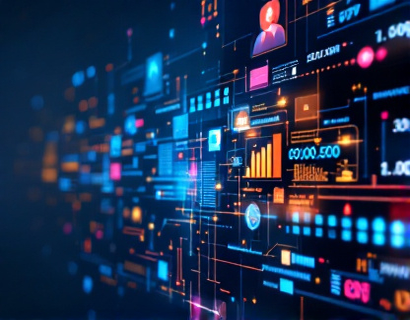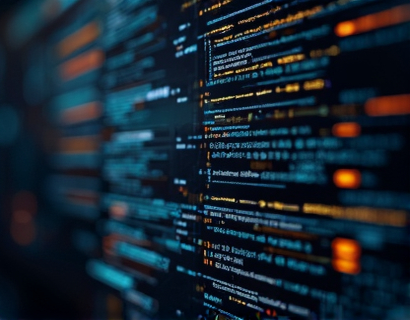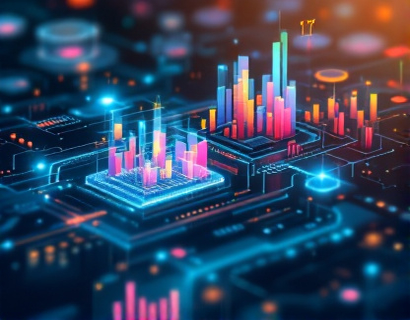Harnessing AI and Crypto: Revolutionizing Ucosystem Applications for the Next Generation
The intersection of artificial intelligence and cryptocurrency is giving birth to a new era of technological advancements, fundamentally transforming the way we interact with digital applications and services. This fusion is not just an evolution but a revolution, promising unprecedented levels of efficiency, security, and innovation. As we delve into this topic, it's essential to understand the foundational technologies driving this change and how they are being harnessed to create next-generation applications.
Artificial intelligence, with its ability to process vast amounts of data, learn from patterns, and make decisions with minimal human intervention, has become a cornerstone of modern technology. When combined with the decentralized and secure nature of cryptocurrency, the potential for transformative applications is immense. This article explores how these two domains are merging to redefine digital interactions and experiences, particularly for tech-savvy innovators and early adopters.
Foundations of AI and Cryptocurrency
To fully appreciate the impact of merging AI and cryptocurrency, it's crucial to understand the basics of each technology. Artificial intelligence encompasses a range of techniques including machine learning, natural language processing, and computer vision. These technologies enable machines to perform tasks that traditionally required human intelligence, such as recognizing speech, interpreting images, and making complex decisions.
Cryptocurrency, on the other hand, is a digital or virtual currency that uses cryptography for security and operates on a decentralized network, typically a blockchain. This decentralized nature ensures transparency, security, and reduces the need for intermediaries. The most well-known cryptocurrency, Bitcoin, was the first to demonstrate the potential of this technology, but the space has since expanded to include thousands of altcoins and a wide array of applications beyond just currency.
Synergies Between AI and Cryptocurrency
The synergy between AI and cryptocurrency is multifaceted. One of the primary areas where they complement each other is in enhancing security. Blockchain's inherent security features, combined with AI's advanced encryption and anomaly detection capabilities, create a robust system that is highly resistant to fraud and cyber threats. AI algorithms can monitor blockchain transactions in real-time, identifying and mitigating suspicious activities with high accuracy.
Another significant area of synergy is in optimizing network performance. Blockchain networks, especially those using proof-of-work consensus mechanisms, require substantial computational power. AI can optimize this process by predicting network loads, managing resource allocation, and improving the efficiency of mining operations. This not only reduces energy consumption but also enhances the overall scalability and reliability of the network.
Smart Contracts and AI-Driven Automation
Smart contracts, self-executing contracts with the terms directly written into code, are a pivotal component of blockchain technology. When combined with AI, smart contracts can become even more powerful and versatile. AI can analyze complex data sets to automate decision-making processes within smart contracts, enabling more sophisticated and dynamic agreements. For instance, AI-driven smart contracts can adjust terms based on real-time market conditions, user behavior, or other variables, providing a level of adaptability that traditional contracts cannot offer.
Moreover, AI can enhance the development and deployment of smart contracts by automating code generation, testing, and deployment processes. This automation reduces the risk of human error and speeds up the development cycle, making it easier for developers to create and deploy robust and secure smart contracts.
Decentralized Finance (DeFi) and AI
Decentralized Finance, or DeFi, is a rapidly growing sector that leverages blockchain technology to create financial services without traditional intermediaries. AI plays a crucial role in enhancing DeFi platforms by providing advanced analytics, risk management, and personalized financial services. AI algorithms can analyze market trends, predict price movements, and optimize trading strategies, offering users more informed and profitable investment decisions.
Additionally, AI can improve the user experience in DeFi by personalizing interfaces and services based on individual user preferences and behaviors. This level of personalization not only enhances user engagement but also increases the accessibility of DeFi services to a broader audience.
Supply Chain Management and AI
Supply chain management is another area where the combination of AI and cryptocurrency can drive significant improvements. Blockchain provides a transparent and immutable record of transactions, ensuring traceability and accountability throughout the supply chain. AI can further enhance this by analyzing data from various points in the supply chain to predict bottlenecks, optimize logistics, and reduce costs. For example, AI can predict demand patterns, optimize inventory levels, and streamline transportation routes, all while ensuring that transactions are secure and verifiable on the blockchain.
Cryptocurrency can facilitate seamless and secure payments within the supply chain, reducing the need for intermediaries and lowering transaction costs. Smart contracts can automate payment processes based on predefined conditions, ensuring that payments are made only when specific criteria are met, thus enhancing trust and efficiency.
Identity Verification and AI
Identity verification is a critical aspect of many digital applications, and the combination of AI and cryptocurrency can revolutionize this process. Traditional identity verification methods are often centralized, vulnerable to breaches, and prone to fraud. AI-powered blockchain solutions can provide decentralized and secure identity management systems. These systems use AI to analyze and verify identity attributes, ensuring that only authorized individuals access specific services or data.
Cryptocurrency can be integrated into these systems as a medium of exchange or as a form of identity proof, such as through the use of non-fungible tokens (NFTs) that represent unique identity attributes. This approach not only enhances security but also gives users greater control over their personal data.
Challenges and Considerations
While the potential benefits of merging AI and cryptocurrency are substantial, there are also challenges and considerations that must be addressed. One of the primary concerns is regulatory compliance. The decentralized and often anonymous nature of cryptocurrency transactions can pose challenges for regulators aiming to enforce laws and prevent illegal activities. AI can help mitigate these risks by enhancing compliance monitoring and ensuring that transactions adhere to regulatory standards.
Another challenge is the technical complexity involved in integrating AI with blockchain systems. Developing robust and scalable solutions requires expertise in both domains, and there is a need for more standardized frameworks and tools to facilitate this integration. Additionally, the energy consumption associated with blockchain mining and AI computations is a significant environmental concern that needs to be addressed through more sustainable practices.
Future Outlook
Looking ahead, the convergence of AI and cryptocurrency is poised to drive even more innovative applications and use cases. As technology continues to advance, we can expect to see more sophisticated AI-driven financial services, enhanced supply chain solutions, and more secure identity verification systems. The integration of AI with emerging blockchain technologies like sharding, layer 2 solutions, and quantum-resistant algorithms will further enhance the capabilities of these systems.
For tech-savvy innovators and early adopters, the future is bright. The combination of AI and cryptocurrency offers a fertile ground for experimentation and innovation, with the potential to create transformative applications that redefine digital interactions and experiences. By staying at the forefront of these developments, individuals and organizations can position themselves to capitalize on the opportunities presented by this exciting intersection of technologies.











































